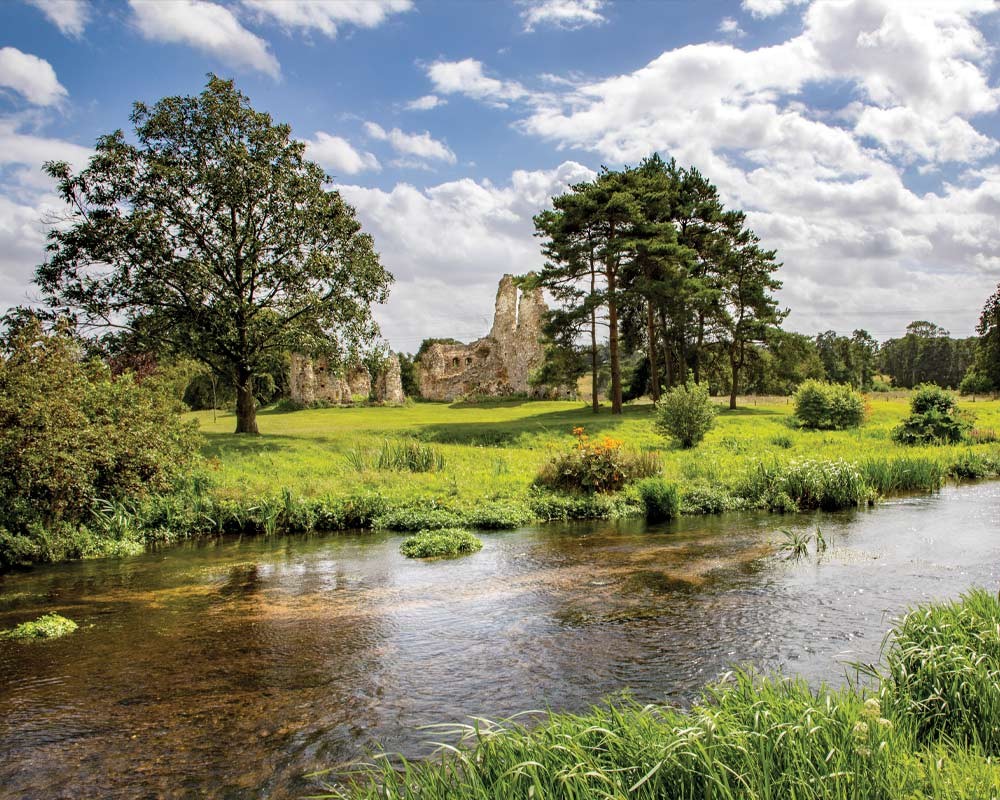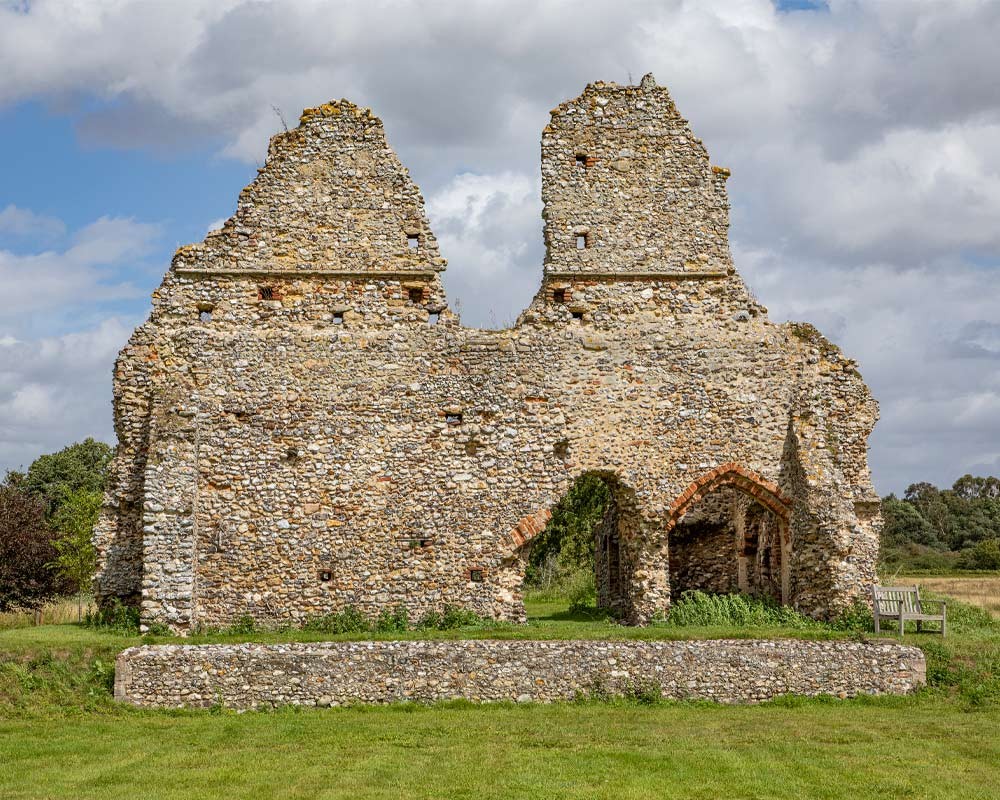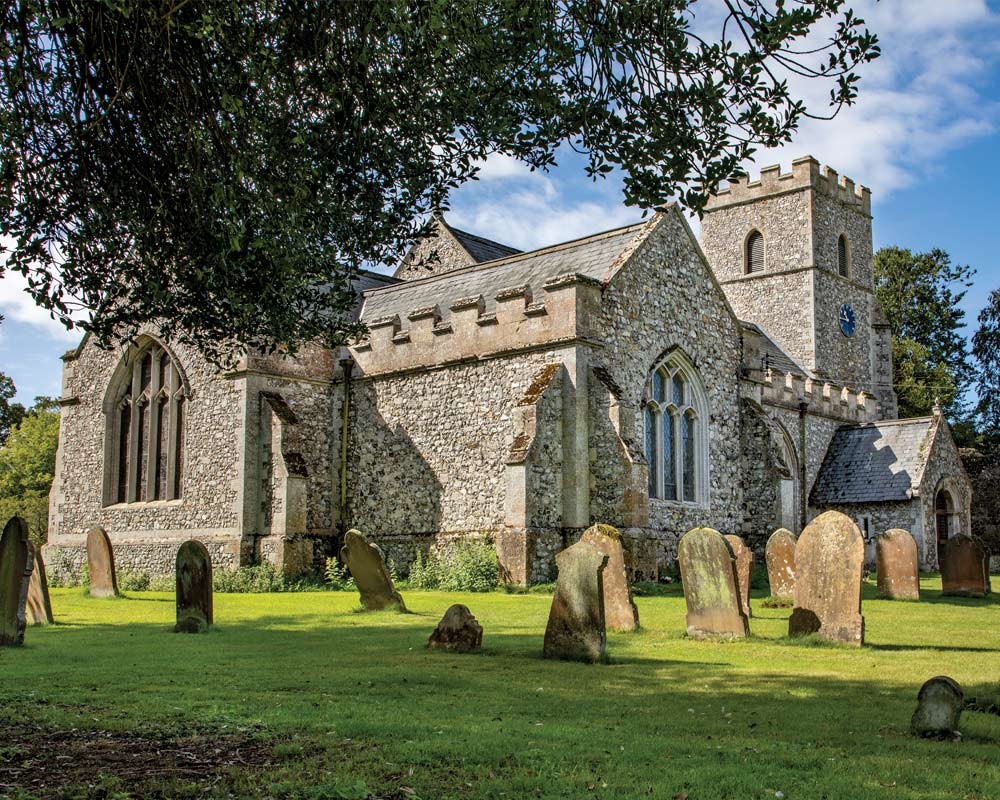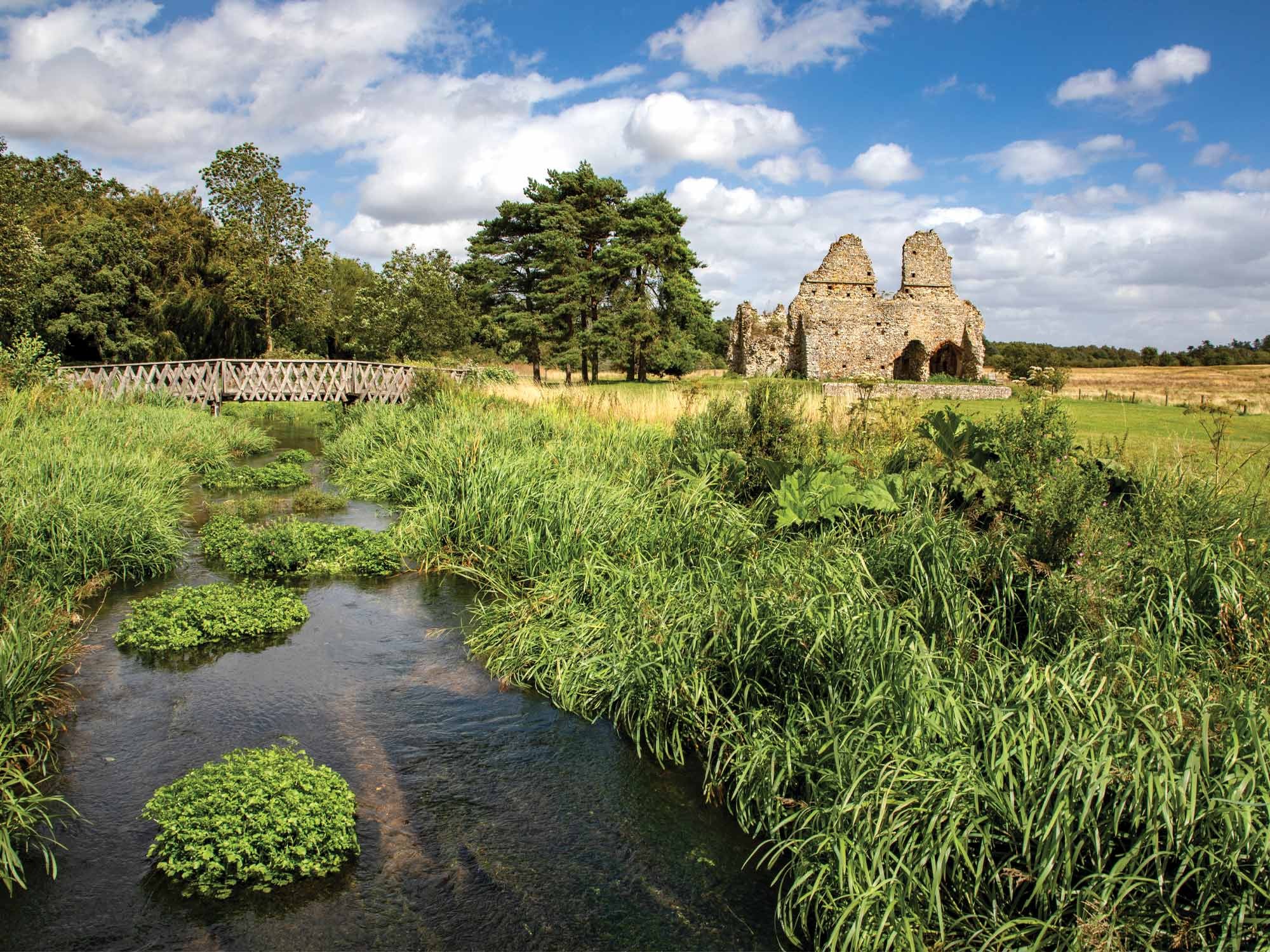
From knights to kings: the priory of West Acre
A solitary gatehouse and a few walls close to the church of All Saints at West Acre are the only remnants of a fascinating history that stretches back over 900 years and includes conquest and reformation...
The evocative remains of the priory at West Acre in the middle of west Norfolk are almost as old as England itself. It was originally founded around 1087 by the French knight Ralph de Toni, who’d been rewarded for his participation in the Norman Conquest with a number of baronies in Hertfordshire and Norfolk, the latter of which involved him receiving no less than 22 different manors in the county.
Built for monks of the Augustinian order, the priory was dedicated to St Mary and All Saints, and within three generations held property in 74 different parishes. By that time it was estimated its annual income was around £140, which may not sound a lot today but would have taken a skilled tradesman of the time some 38 years to earn.
Despite a devastating fire in 1286 that destroyed the church and the adjacent convent buildings, the priory and its grounds were eventually larger than those at Castle Acre - and what remains today lays to the south of the village’s church. Some sections of flint wall can be seen from the churchyard, and most of the impressive 14th century gatehouse still stands to the west, and features the shield of Guy de Beauchamp, Earl of Warwick, who’d married into the Toni family. Only fragments of the large priory church remain, however.
At its height the priory at West Acre was a hugely impressive and influential religious house. In fact by 1479 it had become so large that King Edward IV allowed it to host its very own annual fair on July 7th (the anniversary of the translation of the book of St Thomas the Martyr) but things were about to change.
And they would change drastically.
In August 1494 a certain Bishop Goldwell visited the priory, and he wasn’t particularly impressed by what he found at West Acre. According to his report many of the monks were lazy, the students sent there to study weren’t paying their expenses, and the sub-prior wasn’t just insolent and rude - he was far more interested in rearing swans and farming a rabbit warren than anything else.
The situation didn’t improve. Less than 20 years later Bishop Nicke recorded that the priory at West Acre had fallen into serious debt, had sold most of its sheep, was having to import nearly all of its grain, and didn’t even have a schoolmaster to teach the boys.
Given the changing religious times the end was inevitable, and on 15th January 1538 the priory at West Acre became the first of the monastic ‘surrenders’ and it gradually fell into ruin - although this early dissolution eventually helped revive the fortunes of the village’s nearby church.
By 1602 the church of All Saints at West Acre was described as being “wholly decaied and ruynated” but it was soon to find a benefactor in Sir Edward Barkham, who restored it in 1638 to celebrate his first election as Lord Mayor of London using stone from the redundant priory, totally re-facing the outer walls and employing dressed stone that frequently included precious old carvings.
For instance, just inside the north porch of the church (to the west of the inner door) you can still see an ancient carved stone from the priory which probably depicts a seated Virgin Mary, although it’s now considerably worn.
The clock on the north face of the church tower is particularly interesting, as it replaces the numerals with the 12 letters spelling out the phrase ‘watch and pray’ - taken from the words Jesus spoke to his disciples in the Garden of Gethsemane (Matthew 26:41) the evening before he was crucified. It is however, a much later addition, having been installed at the start of the 20th century.
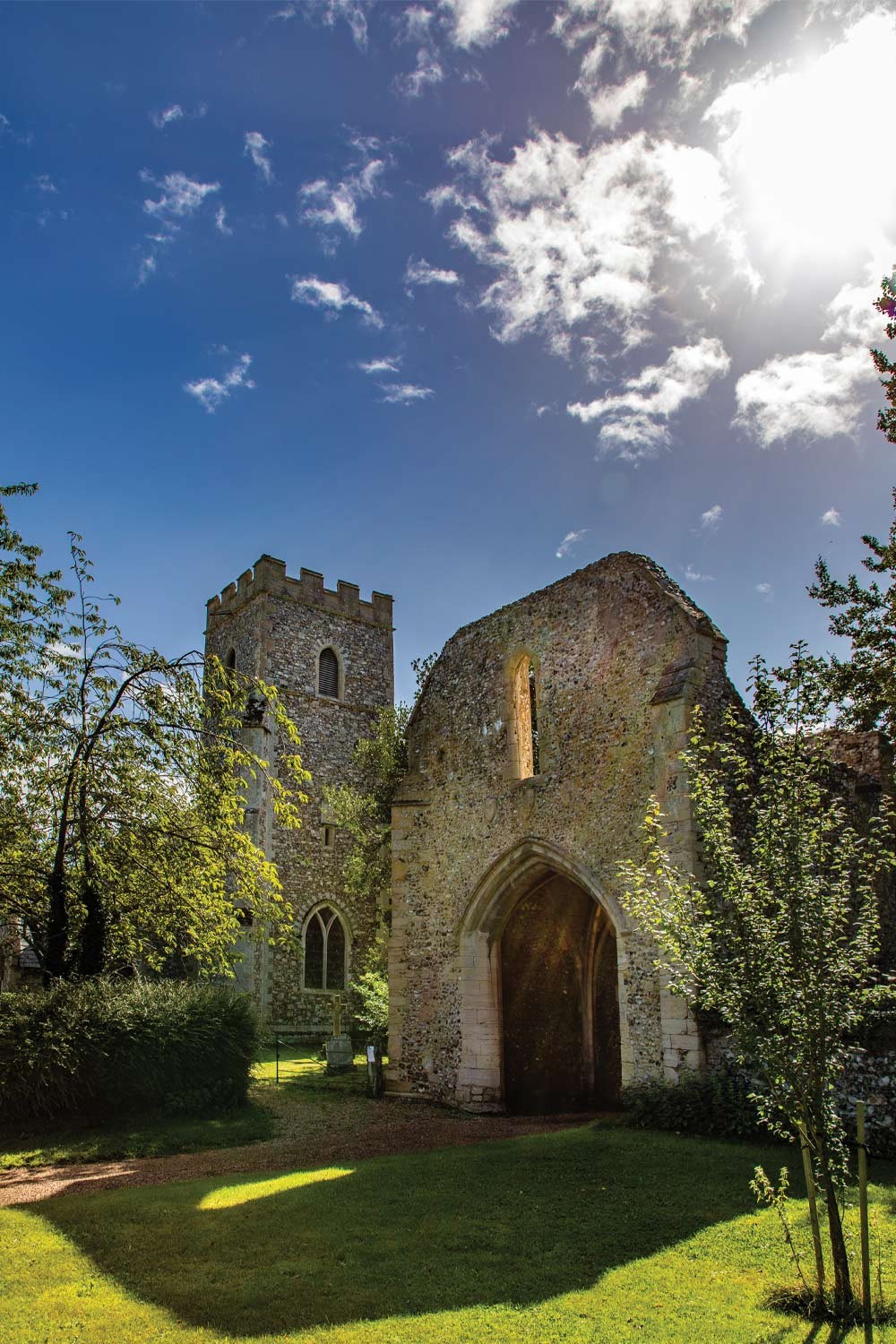
The church isn’t just a remnant of the distant past, however. The interior of All Saints includes a surprisingly large number of memorials to the influential Hamond family (don’t miss the stunning east stained-glass window which features several family members) and many memorials dedicated to the many young men of the parish who died during the First World War.
One of the most interesting memorials in the church is dedicated to Gillian Birkbeck, who died while working as a missionary in Kobe, Japan - almost 6,000 miles from her home.
Another fascinating part of the church is the royal arms of George III near the south door. When the United Kingdom was created in 1801 the fleurs-de-lys (representing the kingdom of France) was officially removed from the royal arms - but here it is, even though George III wouldn’t die for another 20 years.
At face value, West Acre may not be the most significant village in the country (it’s home to a mere 200 people) but it may well be one of the most interesting, telling the tumultuous story of England from the Norman Conquest to the Reformation, and from the glory days of the British Empire to the world wars of the 20th century.
If a story was ever told in stone, this is it.
